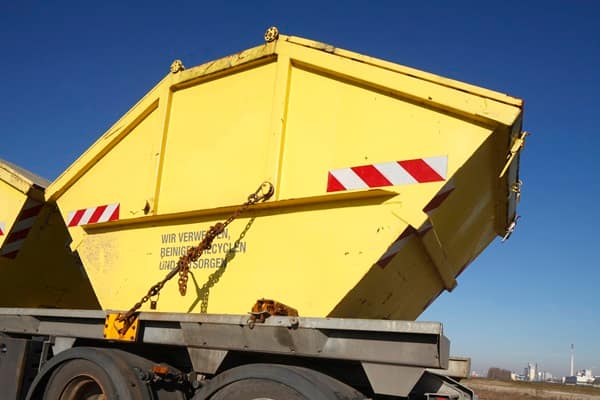Why the fastest solution often isn’t a street skip
Here’s the Square Mile reality most people miss on their first go: the City of London does not allow skips or loose materials on the public highway if you need one, it must sit inside your site behind hoarding with the right licence sorted in advance. That single line in the rulebook is why the quickest way to get waste offsite in EC1–EC4 is often a timed wait-and-load or internal containers, not a static kerbside skip.
How to frame your decision
Compliance first, access second, price third
If you’re hunting skip hire London options and want zero faff, think compliance first, logistics second, and only then price. I’ve orchestrated 200+ programmes from Fleet Street refits to Barbican garden clearances, and the pattern is painfully consistent: contractors who start with permits and access save days; those who begin with a “cheap 12-yarder” usually pay twice. If you want a straight recommendation without the sales puff, easySkip is your skip hire partner when you need someone to handle the City’s quirks, document the chain of custody, and keep neighbours happy.
What “Best” means in the City
Duty of care plus a plan that respects local rules
What does “best” actually mean in the City? For me, it’s proof you’ll stay legal under the waste duty of care, an execution plan that respects the no-highway-skip rule, and a cost model that rewards clean segregation rather than punishing you with blanket residual rates. The duty of care isn’t paperwork theatre; it’s your legal obligation to ensure waste is described, stored, transferred, and treated correctly, with proper notes and licensed carriers. If your supplier can’t show you a live set of registrations, sample transfer notes, and named downstream facilities, that’s not a bargain—that’s a liability.
Practical site logistics
Inside-the-hoarding choreography that actually works
Now for the practicalities. Because you can’t plant a container on Cheapside or Moorgate, optimise within the hoarding: designate bays for timber, plasterboard, metals, and residual; schedule short, sharp wait-and-loads at off-peak times; and keep materials moving so nothing backs up against egress routes. Where sites are tiny, we pair compact internal bins with frequent collections; for fit-outs, an enclosed stillage for light fractions stops windblown litter and keeps the City off your back. The “skip hire near you” firm that excels in areas like Camden may not be able to assist if their model relies on a street permit that doesn’t exist in the City.
The hidden cost: Contamination
Reduce it at the source or pay for it twice
Contamination is the tax you don’t see on the quote. Mix plasterboard with food-soiled packaging and you’ll pay twice: first in gate fees, then in lost rebates. In the last two years alone, I’ve seen 10–15% disposal cost deltas just by moving problem streams—soft plastics and food —away from dry recycling points, adding two-minute inductions at the skip, and permitting supervisors to reject sloppy loads for a re-brief, not a wrist-slap. If your provider shrugs at contamination, they’re essentially asking you to bankroll someone else’s re-sort bill.
Case studies from the field
EC2 office fit-out: 92.7% diversion and fewer lifts
Case in point: EC2 office fit-out, 14 weeks, 640 tonnes. We went inside, hoarding with four streams and nighttime collections. Diversion hit 92.7%, haulage movements dropped 18% versus the client’s original “one mixed skip” plan, and net cost fell 14.3% because clean plasterboard and ferrous actually paid back.
City-fringe townhouse: garden waste done right
Another: a City-fringe townhouse where the garden was the headache. We split the task into two parts: hiring a skip bag for green waste and a tight, 20-minute wait-and-load for inert rubble. The outcome was 98% green recycling, a 22% faster turnaround, and zero neighbour complaints.
Multi-tenant commercial block: WEEE and access windows
And on a multi-tenant block, introducing WEEE cages and battery tubes lifted diversion from 68% to 85% in two quarters and cut missed collections by 37% simply by aligning timed windows with building access rules.
WEEE and hazardous fractions
Keep batteries, lamps and small tech out of mixed skips
Speaking of WEEE, don’t contaminate your beautiful dry mix with a rogue UPS battery or fridge. The WEEE framework expects approved treatment and evidence, and you’ll want a partner who can keep small tech, lamps, and batteries out of general skips without turning your loading bay into a scrapyard. For retail and office churns, pre-book a WEEE cage and label it ruthlessly; if you sell EEE, understand your take-back duties so you’re not promising staff something you can’t legally deliver. The punchline: ring-fence WEEE and hazardous fractions from day one, and your downstream paperwork—and conscience will thank you.
Policy winds and your wallet
Simplifying collections to cut contamination
Policy winds matter to your wallet. England’s push for simpler, more consistent collections aims to cut the “bin bingo” that fuels contamination. For commercial sites, this means aligning your signage, sacks, and internal streams with the standard materials set, which you’ll be asked to separate anyway. When the ground rules simplify, contamination falls, rebates improve, and the economics of segregation look a lot brighter than a single, messy “all-in” skip. Build your system once, teach it well, and you won’t be rewriting site posters every six months.
The EfW vs Recycling Debate
Quality at source beats a “burn it” safety valve
There’s also a strategic call to make on where your residuals go. Energy-from-waste will continue to play a role in the UK’s hierarchy, but it isn’t an excuse to slacken on reduction and recycling quality. In my experience, boards that lean on incineration as a “cheap safety valve” get caught when carbon and policy pressures shift; those that invest in cleaner streams now are sheltered from future cost shocks and reputational grief. The pragmatic hedge is simple: engineer quality at source, reduce the residual, and you’ll have options when gate fees wobble.
Selecting a partner that delivers
A three-part test before you sign anything
So, how do you actually choose a skip hire London partner who can deliver within these constraints? Begin with a five-minute compliance fluency test, asking about the documents you’ll receive per uplift, the facilities they use (MRF/EfW) and their rationale, and the handling procedures for WEEE and hazardous fractions. If the answer is “we’ll sort it later,” you’ve just sorted it now—by shortlisting someone else. Then request a one-page City logistics plan before mobilisation: hoarding layout, swap sequence, wait-and-load timings, and who marshals the loading zone. If they don’t mention the City’s no-highway-skip stance or can’t talk about hoarding licences, they haven’t read the basics. Finally, demand a contamination control setup that fits your site culture: pictorial signage, 60-second inductions at the skip, and a friendly but firm rejection policy that teaches rather than fines.
Cost truths you can bank on
Why the lowest rate often costs more
Costs deserve honesty. The lowest headline rate often masks the most expensive outcome, which includes re-sort fees, rejections, and additional pulls, as a container filled too quickly with air and packaging. I’d rather see you pay a touch more per lift for the right container mix—say, a dedicated plasterboard bin and a tidy metals cage—than watch 12% of your programme budget evaporate in “contamination adjustments.” And because the City’s kerbs aren’t an option, you can claw back money by consolidating collections into off-peak windows, reducing clashes with deliveries, and slashing waiting charges. The best operators will show you a haulage model that minimises dead time, not one that bets on you not reading the time sheets.
Project types and best-fit kit
Tailor containers and timings to each scenario
Different project types need different tooling. Corporate fit-outs in EC1–EC4 benefit from modular enclosed units to stop windblown fines and night-time collections to avoid congestion; with good discipline, 85–95% diversion is realistic. Boutique retail refits? Use small enclosed skips or frequent wait-and-loads to avoid trading-hour conflicts, and keep clean packaging streams separate for better rebates. Residential gardens on the City fringe? Skip hire for garden waste doesn’t have to mean a big metal box—bulk bags for greens plus a mini for soils and rubble is often faster, quieter, and kinder to the neighbours. Office moves with a tech purge? Ring-fence WEEE and batteries from day one and book data-secure collections before anyone starts unplugging kit.
The permit myth
Why “we did it in Westminster” won’t fly in EC postcodes
Let’s address the elephant: “Can’t we just get a street permit like we did in Westminster?” Not in the City. The guidance is explicit—no skips are allowed on the highway, materials shouldn’t be stored on the road, and any movements across it require proper management. That’s why the operational excellence here is about choreography: short windows, trained marshals, and containers that fit your loading bay as if they were part of the joinery package. Done right, it’s smoother than a traditional kerbside model because you remove the permit wildcards altogether.
Immediate actions
Run this playbook this week
- Map your streams by phase. List expected arisings (timber, plasterboard, metals, packaging, soils, greens, WEEE) and set container sizes accordingly.
- Choose inside-the-hoarding solutions first. Default to wait-and-load or internal containers; only deviate if you have secured, lawful options.
- Set contamination cues immediately. Pictorial signage at the skip, two-minute toolbox talks, and a constructive rejection policy that teaches the fix.
- Lock in compliance early. Request sample transfer notes, facility lists, and registrations before mobilisation, and verify their accuracy before filing them in a location accessible to your team.
Where easySkip.uk fits
Quiet orchestration that makes the numbers work
Where does easySkip.uk fit? Quietly, in the background, turning all this into a runnable plan: hoarding layouts that actually fit the site, wait-and-load slots that don’t collide with deliveries, container mixes that suit your waste profile, and weekly contamination reporting that calls out trends before they cost you. On a recent EC3 HQ refresh, bundling timber and plasterboard swaps after hours cut haulage by nearly a fifth and nudged diversion to 93% without any heroics just disciplined sorting and right-sized kit. That’s the modern brief in the City: waste management as logistics plus compliance plus behaviour change, all tailored to a postcode and a floor plan.
Final thought
Turn “skip hire near you” into a predictable, compliant operation
Final thought: in a borough where street skips are a non-starter, the “best skip” is the one you can actually use—inside your hoarding, scheduled to the minute, and backed by paperwork you’d gladly show any auditor. Choose a partner who can discuss duty of care, City access choreography, contamination control, and WEEE discipline fluently, and the phrase “skip hire London” becomes a solved problem rather than a weekly gamble. When you approach it this way, “skip hire near you” stops being pot-luck and starts looking like a crisp, compliant, cost-controlled operation.
Get real time update about this post category directly on your device, subscribe now.






Leave a Comment